Abstract
Leucocytes from cattle with lethal or sub-lethal infections with Theileria parva were examined for responses in autologous mixed lymphocyte reactions (MLR) and for specific and non-specific cytotoxicity against cultured cell lines. During lethal infections, lymphoblasts isolated from central lymph from days 8 to 14 stimulated proliferation in autologous lymphatic lymphocytes and peripheral blood leucocytes (PBL), although cytotoxicity was not generated in such cultures. After day 14, non-specific cytotoxicity was exhibited by both lymphocyte populations and was maximal in moribund calves. Non-specific lytic activity was also noted in PBL from recovering calves, but disappeared after the elimination of the parasite. Calves immunized against T. parva by the concurrent administration stabilate and long-acting tetracycline showed macroschizont forms of the parasite in host lymphocytes from days 15 to 18 after infection. During this period, lymph node cells from infected calves stimulated MLR-type responses in autologous PBL. However, PBL from immunized calves lysed directly, autologous infected lymphoblasts in a genetically-restricted fashion from days 14 to 21, although additional cytotoxicity was not generated in the MLR. The results imply that when the parasitosis of T. parva is curtailed, specific cell-mediated responses are mounted against parasite-induced antigens in combination with polymorphic host antigens on the leucocyte membrane. These reactions are probably the major immune responses conferring to recovered cattle, immunity against rechallenge with the homologous isolate of T. parva.
Full text
PDF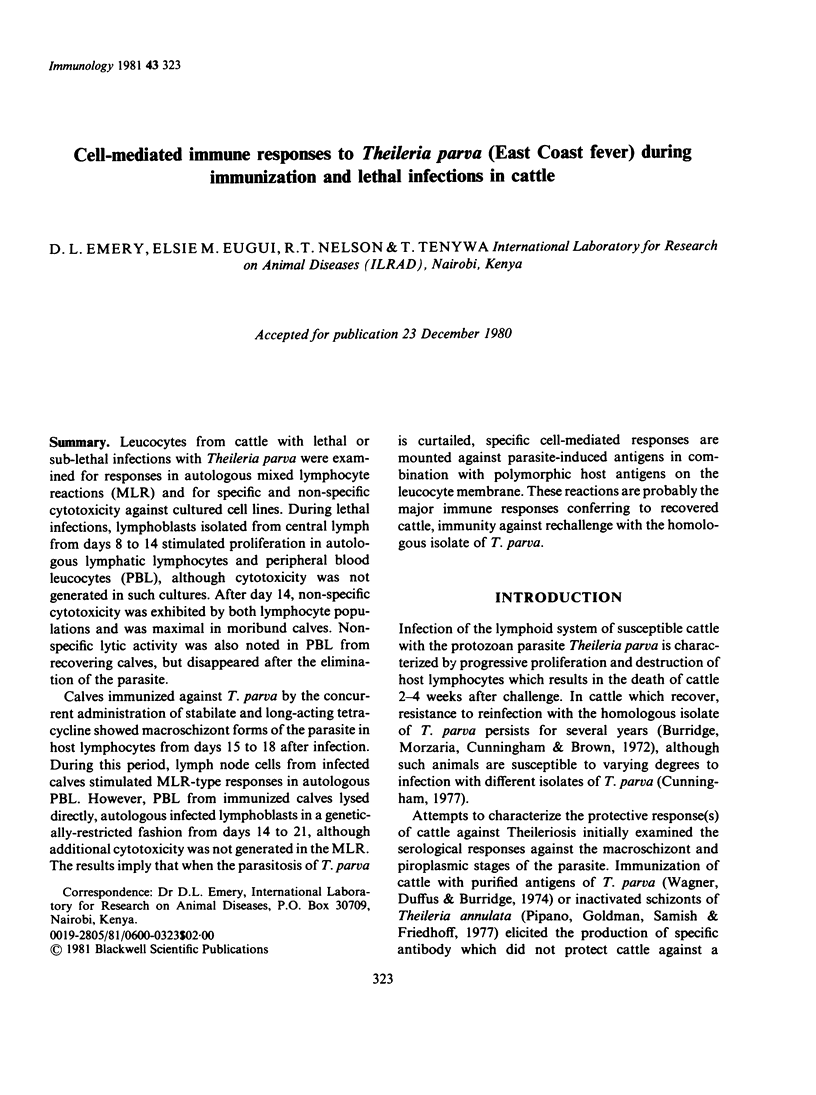
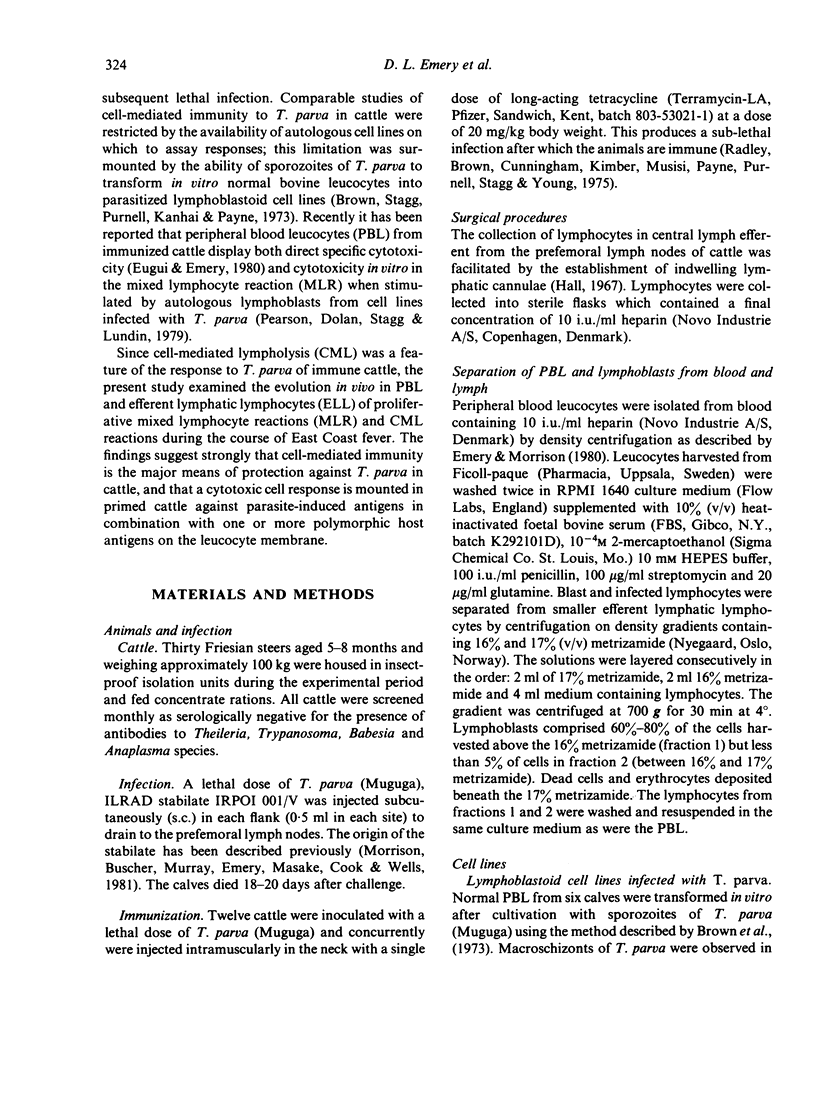
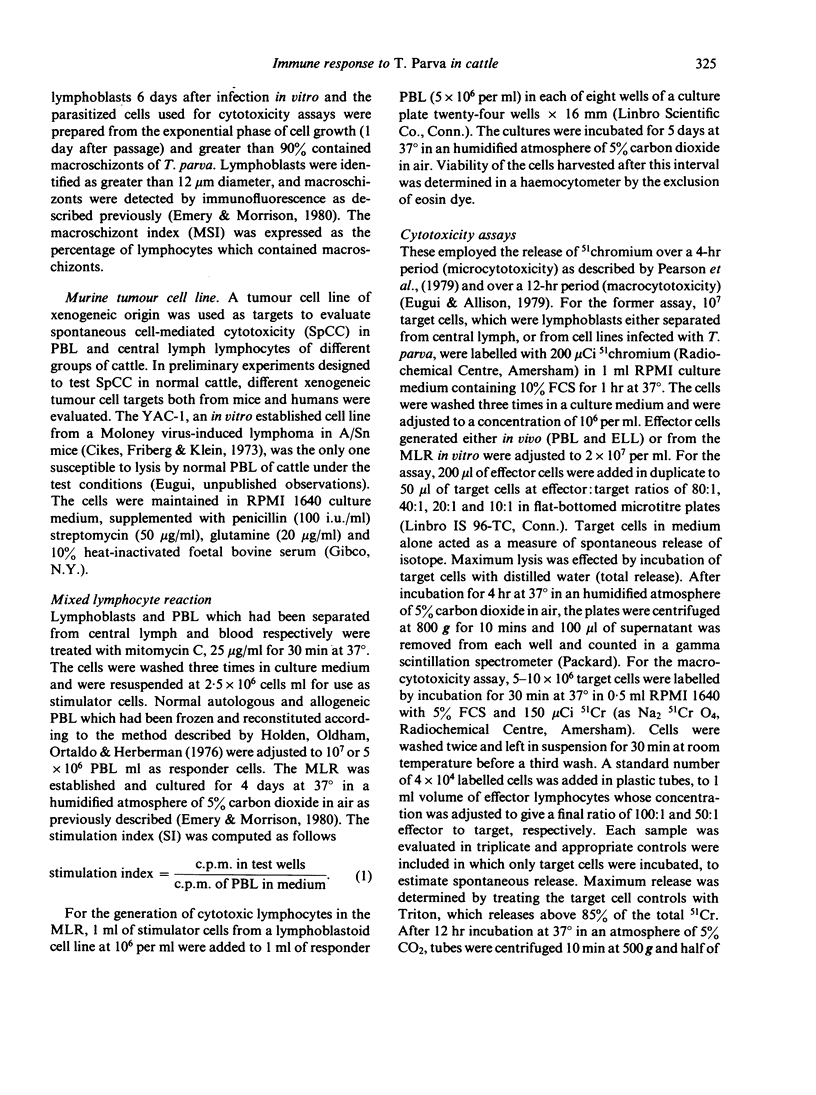
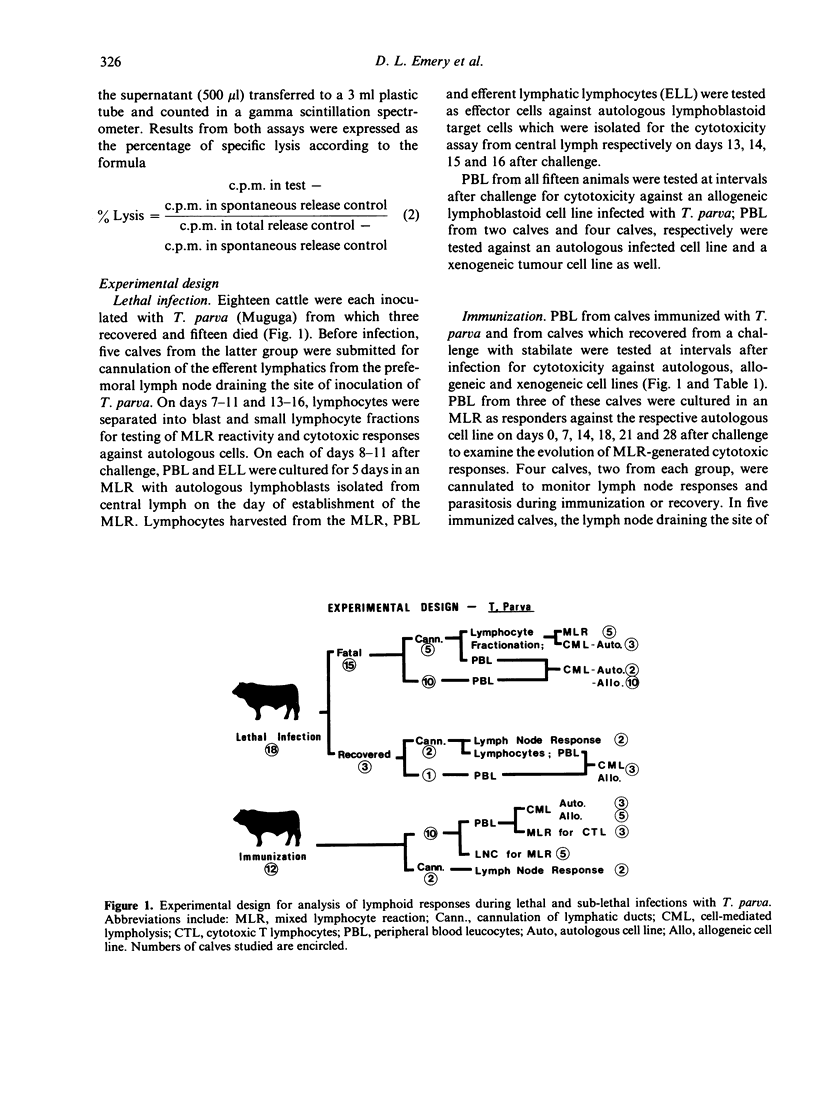
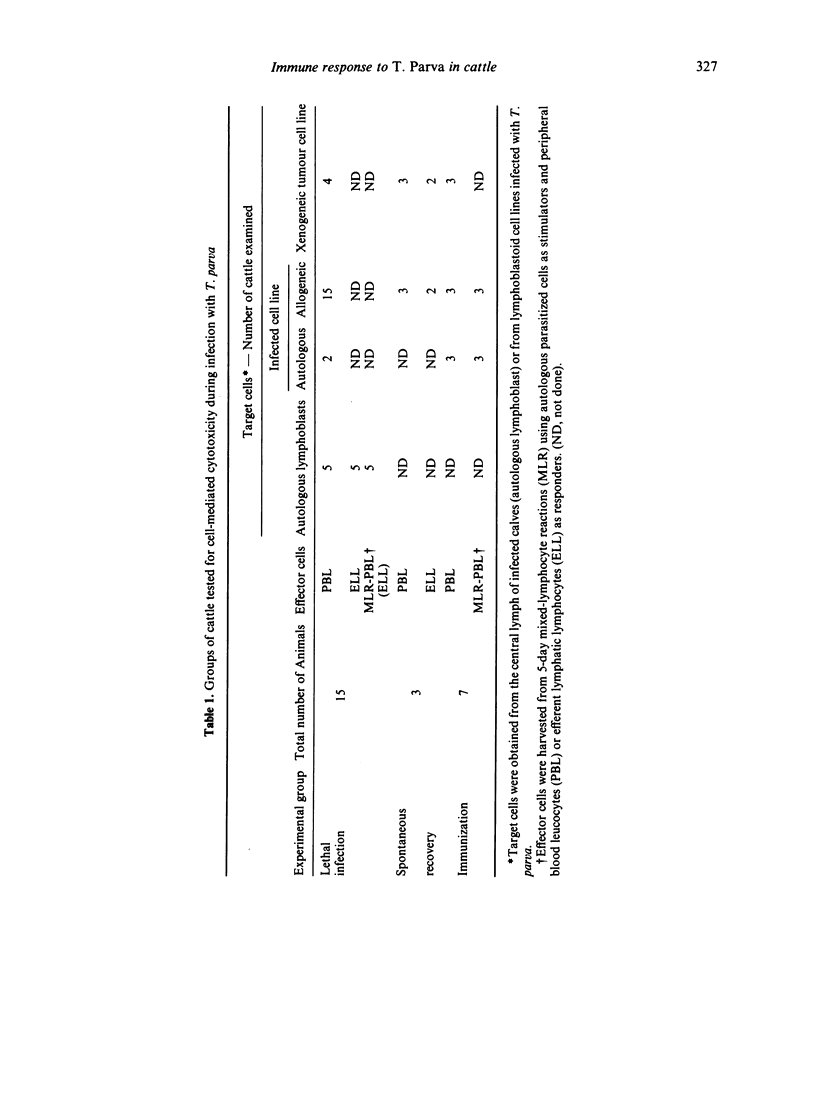
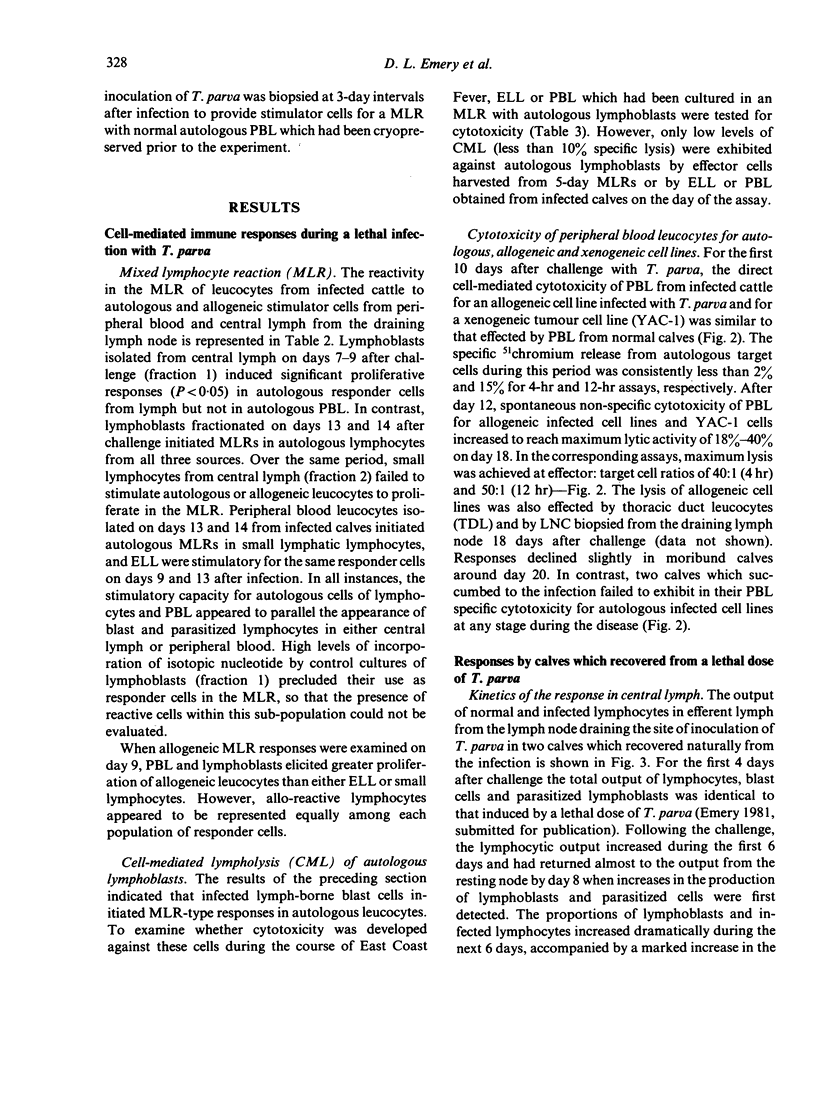
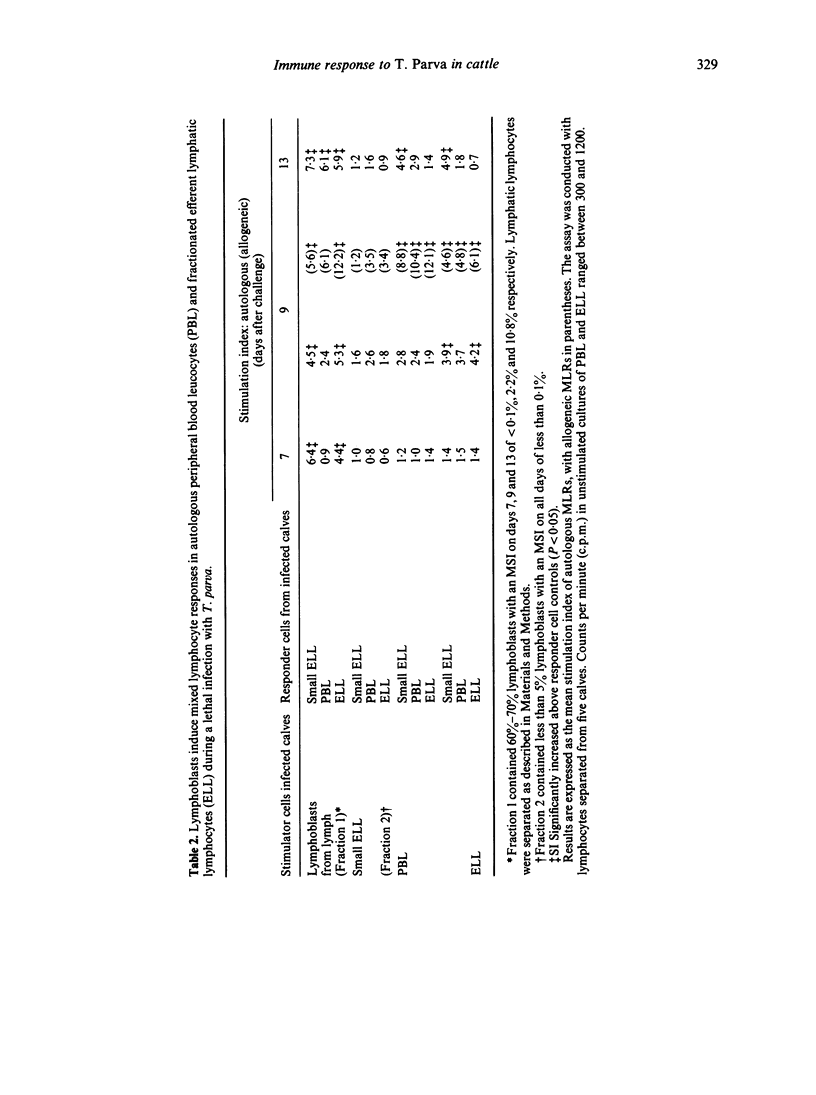
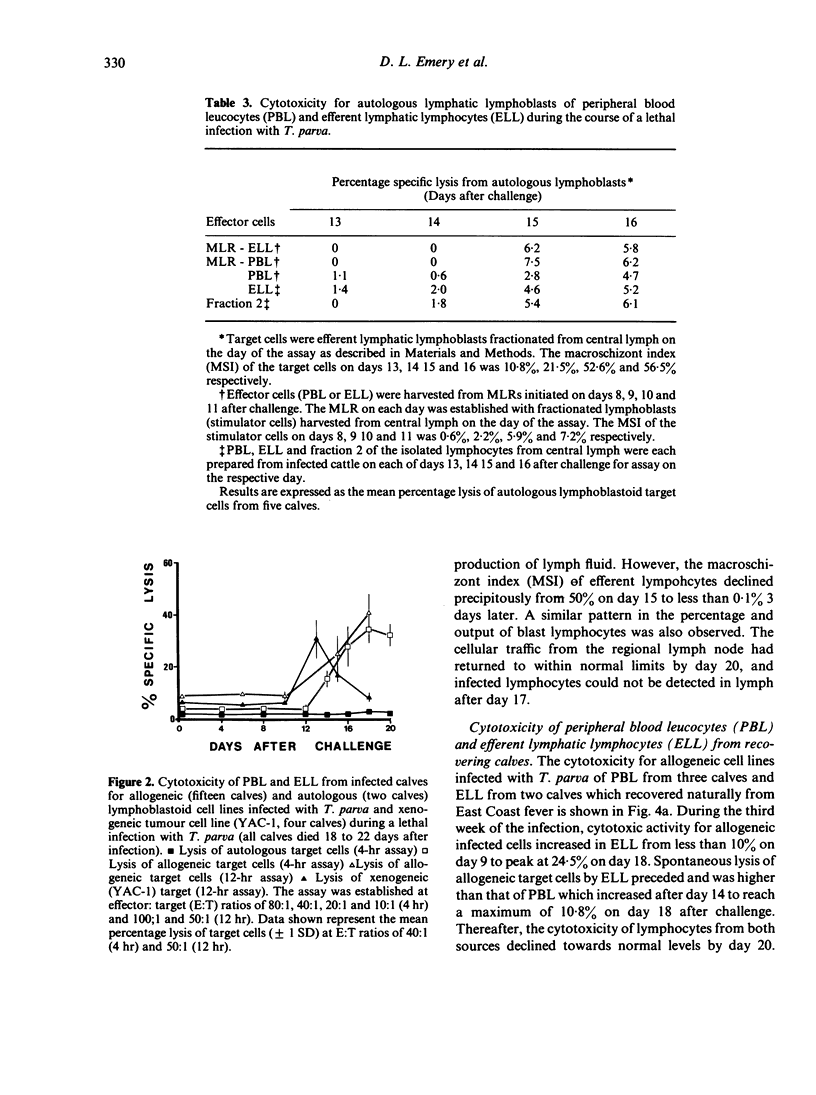
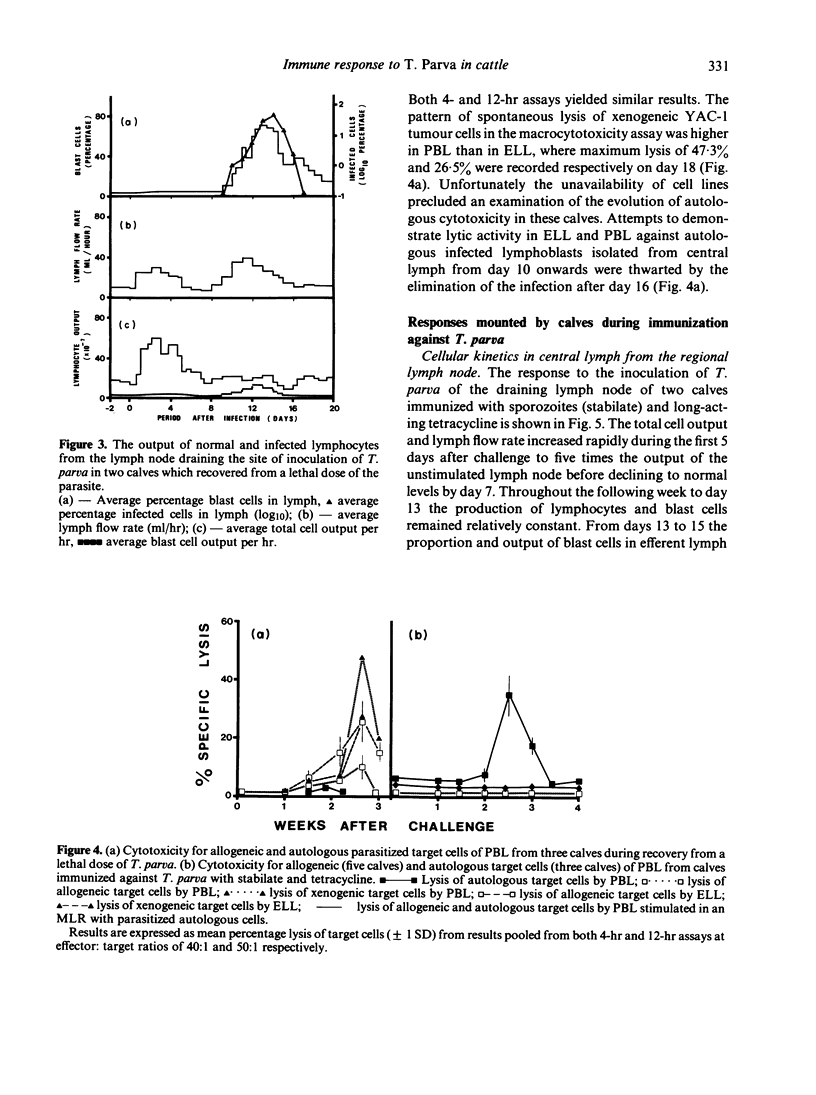
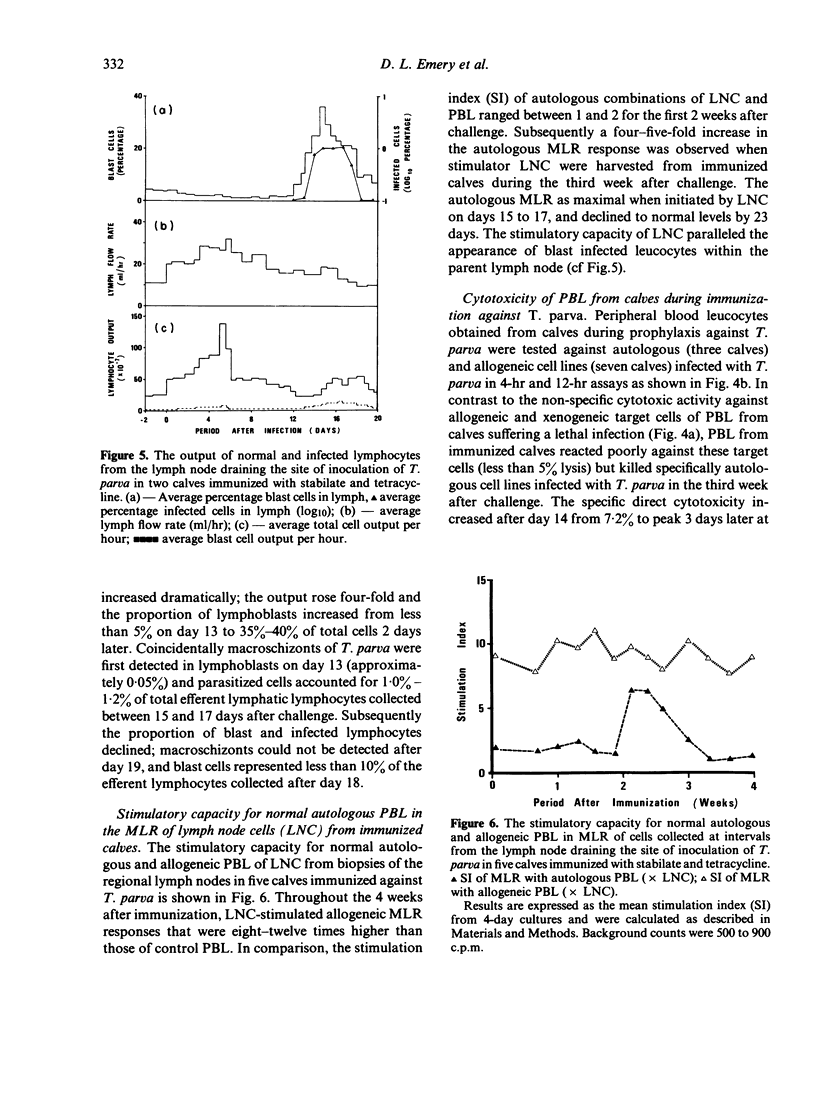
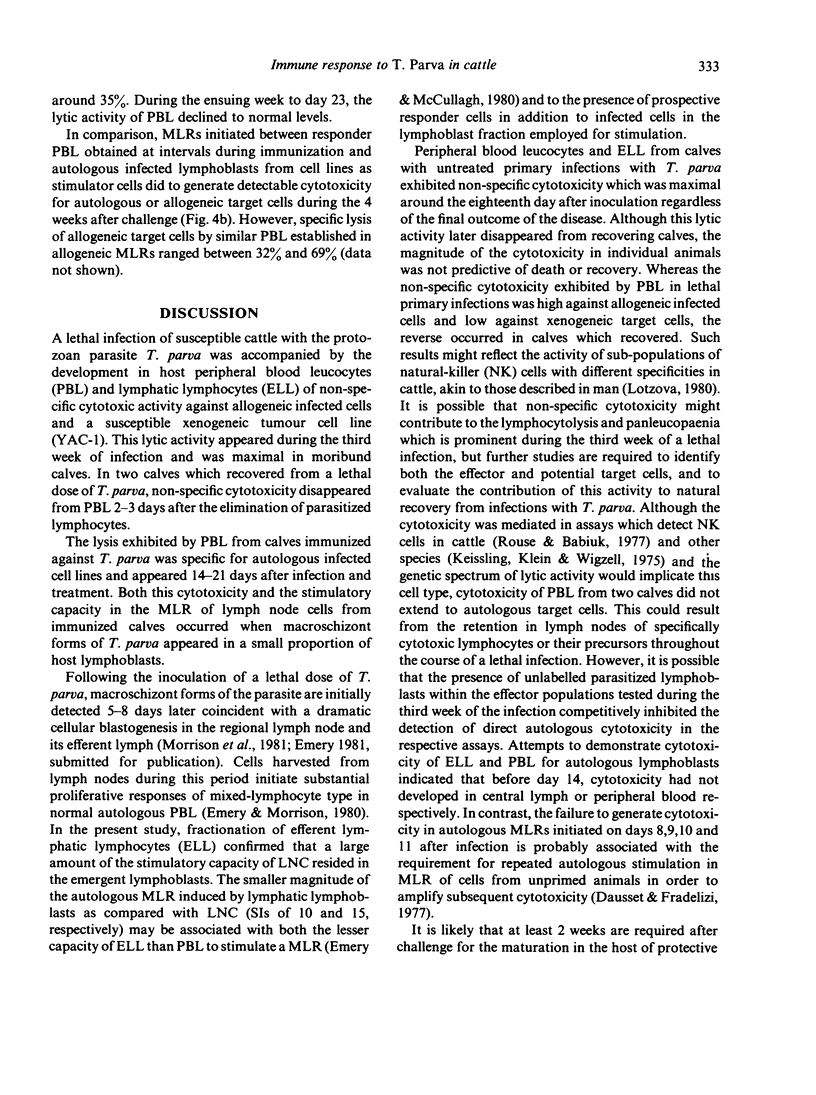
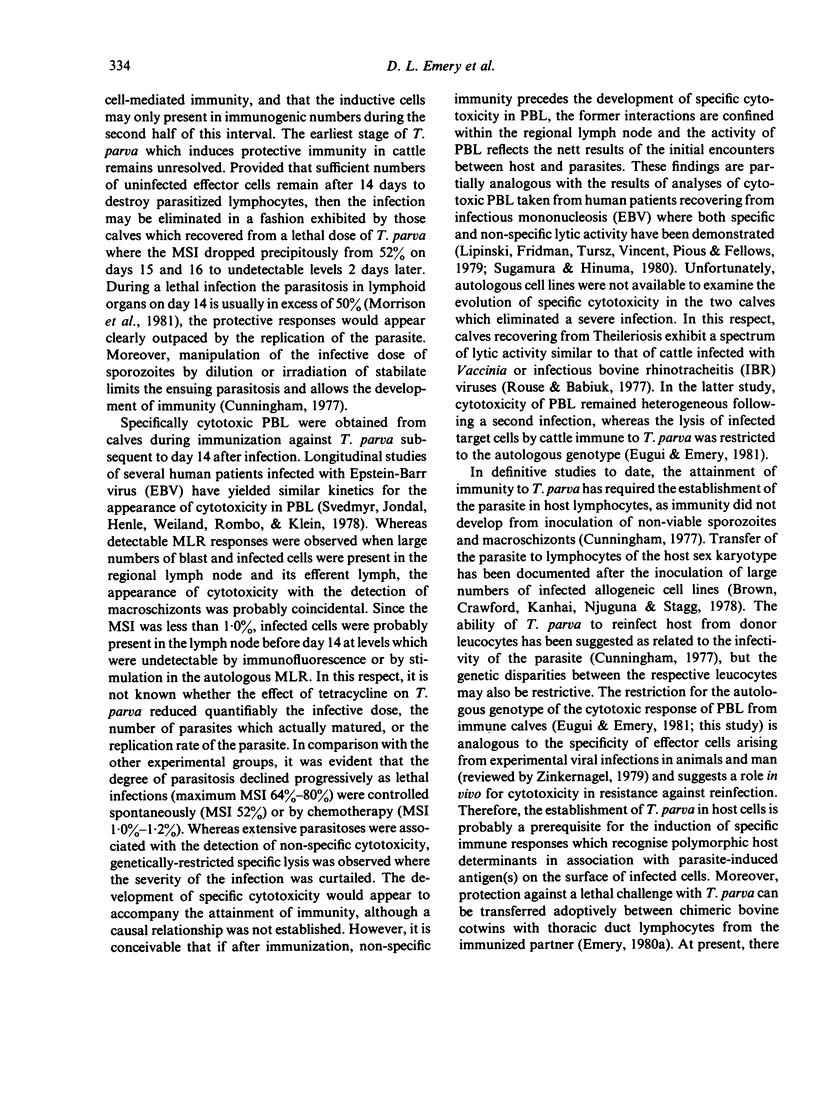
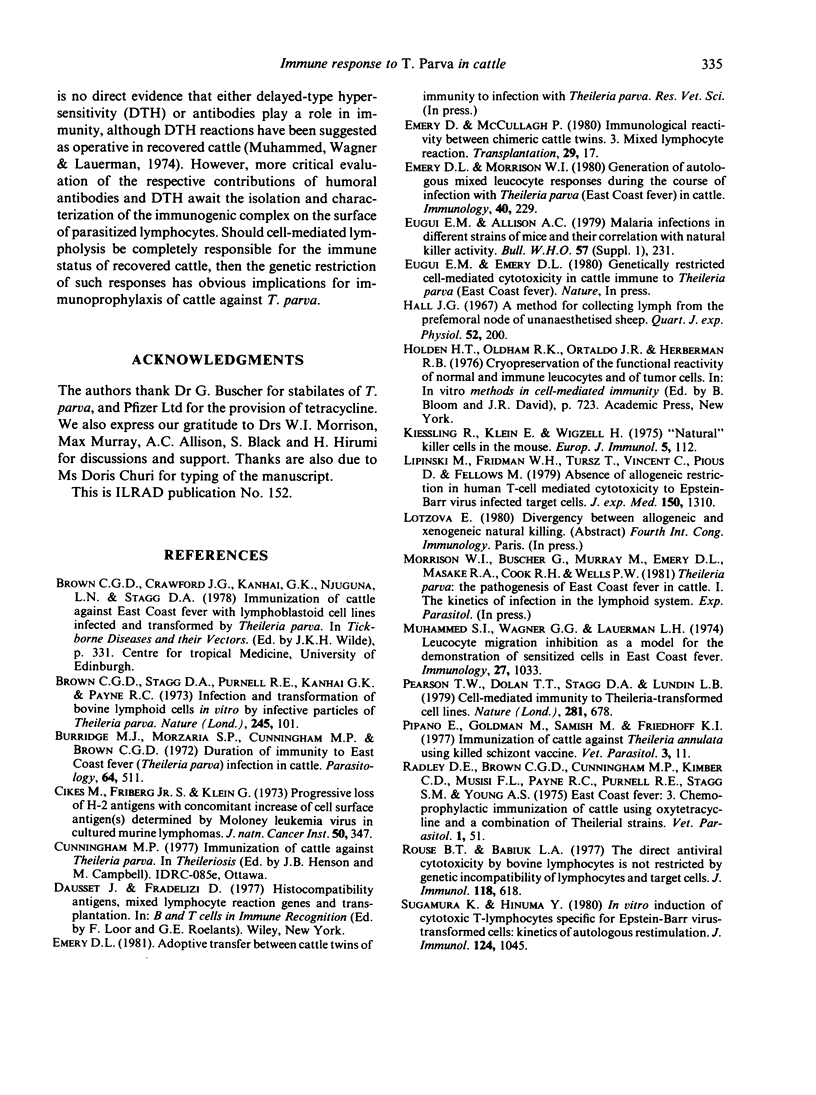
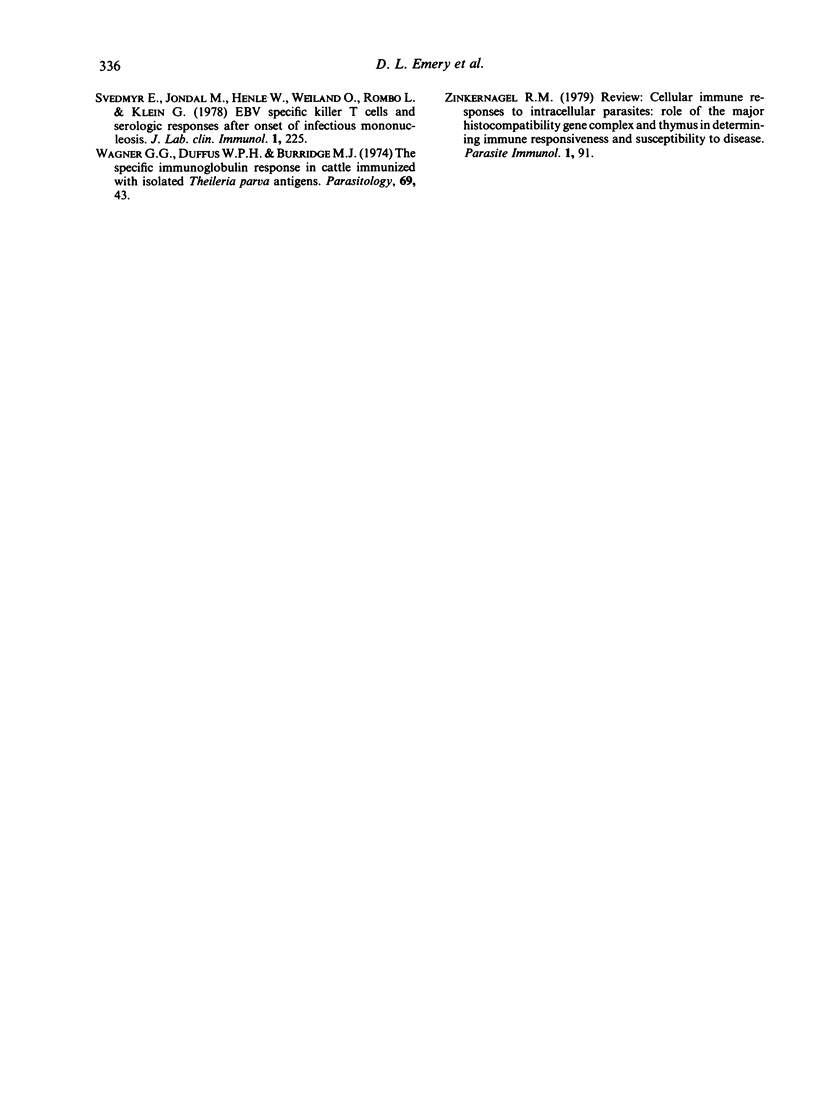
Selected References
These references are in PubMed. This may not be the complete list of references from this article.
- Brown C. G., Stagg D. A., Purnell R. E., Kanhai G. K., Payne R. C. Letter: Infection and transformation of bovine lymphoid cells in vitro by infective particles of Theileria parva. Nature. 1973 Sep 14;245(5420):101–103. doi: 10.1038/245101a0. [DOI] [PubMed] [Google Scholar]
- Cikes M., Friberg S., Jr, Klein G. Progressive loss of H-2 antigens with concomitant increase of cell-surface antigen(s) determined by Moloney leukemia virus in cultured murine lymphomas. J Natl Cancer Inst. 1973 Feb;50(2):347–362. doi: 10.1093/jnci/50.2.347. [DOI] [PubMed] [Google Scholar]
- Emery D. L., Morrison W. I. Generation of autologous mixed leucocyte reactions during the course of infection with Theileria parva (East Coast Fever) in cattle. Immunology. 1980 Jun;40(2):229–237. [PMC free article] [PubMed] [Google Scholar]
- Eugui E. M., Allison A. C. Malaria infections in different strains of mice and their correlation with natural killer activity. Bull World Health Organ. 1979;57 (Suppl 1):231–238. [PMC free article] [PubMed] [Google Scholar]
- Hall J. G. A method for collecting lymph from the prefemoral lymph node of unanaesthetised sheep. Q J Exp Physiol Cogn Med Sci. 1967 Apr;52(2):200–205. doi: 10.1113/expphysiol.1967.sp001902. [DOI] [PubMed] [Google Scholar]
- Kiessling R., Klein E., Wigzell H. "Natural" killer cells in the mouse. I. Cytotoxic cells with specificity for mouse Moloney leukemia cells. Specificity and distribution according to genotype. Eur J Immunol. 1975 Feb;5(2):112–117. doi: 10.1002/eji.1830050208. [DOI] [PubMed] [Google Scholar]
- Lipinski M., Fridman W. H., Tursz T., Vincent C., Pious D., Fellous M. Absence of allogeneic restriction in human T-cell-mediated cytotoxicity to Epstein-Barr virus-infected target cells. Demonstration of an HLA-linked control at the effector level. J Exp Med. 1979 Dec 1;150(6):1310–1322. doi: 10.1084/jem.150.6.1310. [DOI] [PMC free article] [PubMed] [Google Scholar]
- Muhammed S. I., Wagner G. G., Lauerman L. H., Jr Leucocyte migration inhibition as a model for the demonstration of sensitized cells in East Coast fever. Immunology. 1974 Dec;27(6):1033–1037. [PMC free article] [PubMed] [Google Scholar]
- Pearson T. W., Lundin L. B., Dolan T. T., Stagg D. A. Cell-mediated immunity to Theileria-transformed cell lines. Nature. 1979 Oct 25;281(5733):678–680. doi: 10.1038/281678a0. [DOI] [PubMed] [Google Scholar]
- Rouse B. T., Babiuk L. A. The direct antiviral cytotoxicity by bovine lymphocytes is not restricted by genetic incompatibility of lymphocytes and target cells. J Immunol. 1977 Feb;118(2):618–624. [PubMed] [Google Scholar]
- Sugamura K., Hinuma Y. In vitro induction of cytotoxic T lymphocytes specific for Epstein-Barr virus-transformed cells: kinetics of autologous restimulation. J Immunol. 1980 Mar;124(3):1045–1049. [PubMed] [Google Scholar]
- Svedmyr E., Jondal M., Henle W., Weiland O., Rombo L., Klein G. EBV specific killer T cells and serologic responses after onset of infectious mononucleosis. J Clin Lab Immunol. 1978 Nov;1(3):225–232. [PubMed] [Google Scholar]
- Zinkernagel R. M. Review: cellular immune responses to intracellular parasites: role of the major histocompatibility gene complex and thymus in determining immune responsiveness and susceptibility to disease. Parasite Immunol. 1979 Summer;1(2):91–109. doi: 10.1111/j.1365-3024.1979.tb00698.x. [DOI] [PubMed] [Google Scholar]


